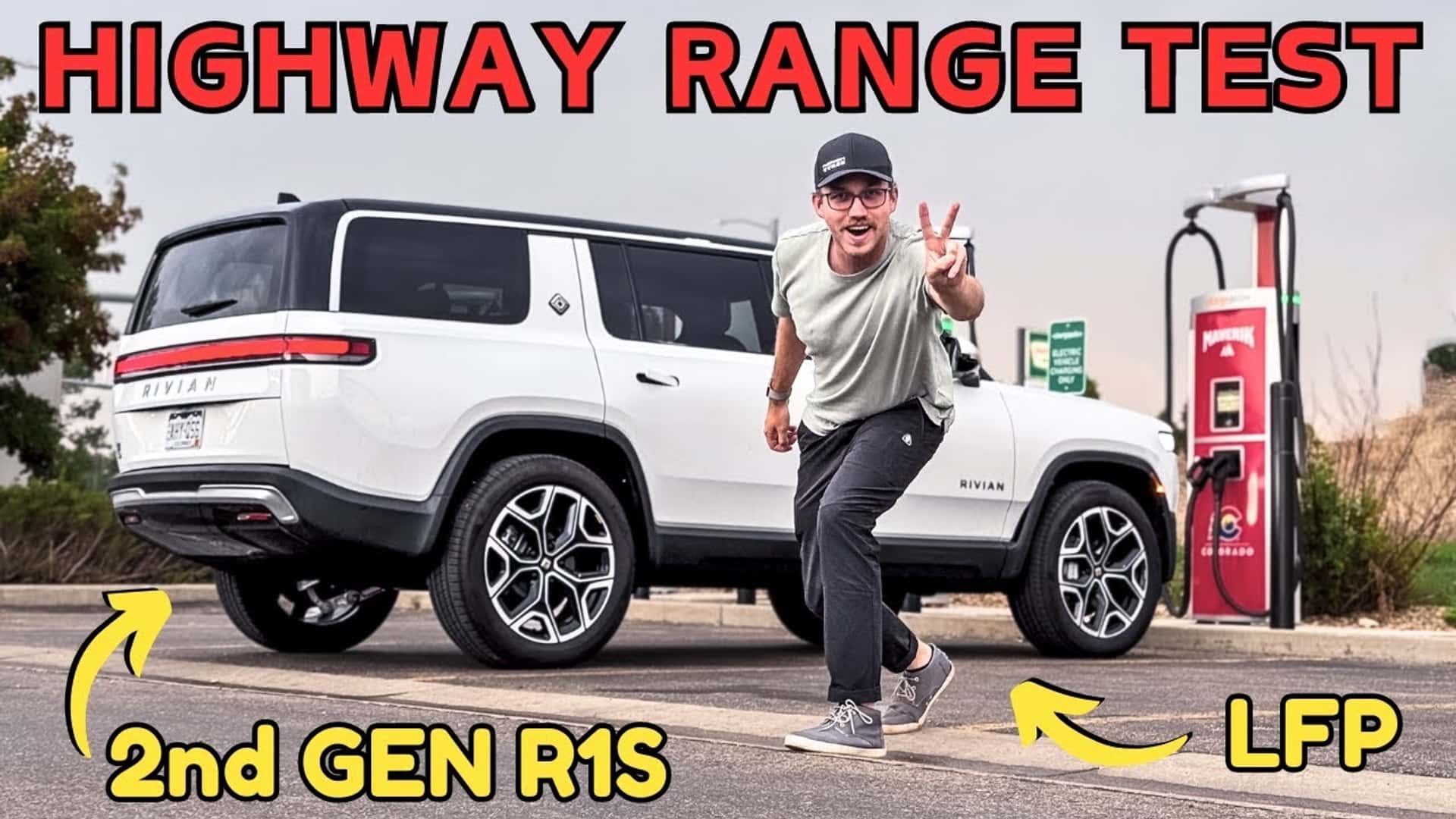
2025 RIVIAN R1S RANGE TEST: HOW FAR THE BASE MODEL GOES ON THE HIGHWAY
The EPA says it will do 270 miles in mixed driving, but this highway test shows its road-trip endurance.
Rivian gave its R1S and R1T flagships a substantial update for the 2025 model year. The company dramatically reduced the amount of wiring and electronic complexity in the trucks, redid the motors and launched a new, more affordable lithium-iron-phosphate (LFP) battery pack for the base models. Now, thanks to our friends Out Of Spec Reviews on Youtube, we finally have a range test of the new LFP truck.
For those unfamiliar with battery chemistry, LFP batteries are an alternative to traditional lithium-cobalt-manganese (LCM) batteries used in most EVs. Both are lithium-ion batteries, but use cathodes made up of different materials. LFP batteries require fewer rare earth minerals, making them cheaper and easier to produce. They also don't mind being charged to 100%—something that causes degradation in LCM packs—and are more stable than LCM packs, making them less likely to experience thermal runaway events that lead to fires. They're hugely popular in China for these reasons. And above all, they keep EV costs down.
Yet they have some major disadvantages compared to NCM batteries, the biggest of which is lower power density. That means you need a bigger, heavier pack to get the same amount of energy you'd get out of an NCM battery, which explains why they haven't taken over.
Rivian only offers LFP batteries in the base configurations of the R1S and R1T for this reason. If you want more range, you have to step up to the more dense NCM packs in the longer-range versions of the R1S and R1T. The LFP pack—available only with a dual-motor setup—is rated for 270 miles of mixed city/highway driving by the EPA. The longest-range NCM configuration can go 420 miles on a charge.
Most people won't regularly drive 270 miles—here, just under four hours at 70 mph—without stopping, so that sounds doable. But because the EPA range is based on a 55% city, 45% highway, and large, heavy vehicles pay a significant efficiency penalty at high speeds, most large trucks underperform their EPA ranges on a highway-only cycle. That's true here as well. In Out Of Spec's test, the dual-motor R1S goes 241 miles on a charge.
That's a respectable max, but note too that in the real world you'll likely stop before you reach that number. Charging stations are unlikely to be perfectly spaced for 240-mile stop intervals, and even if they are, you're probably not going to chance it by running your truck to 0%. When you reach the charging station, you'll save time by only charging to 80%—as the charge rate tapers heavily from that point—meaning your real-world range after your first stop will likely be around 192 miles. That may work for some people, but if you plan to do a lot of long-haul adventures, you might want to step up to a bigger battery on your R1.
More Rivian News
2024-07-25T17:59:09Z dg43tfdfdgfd